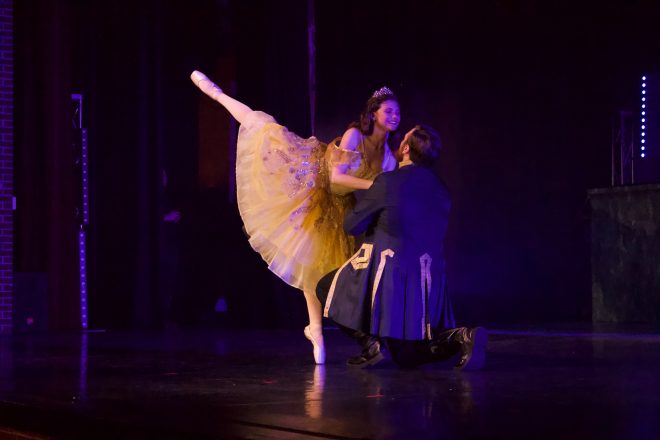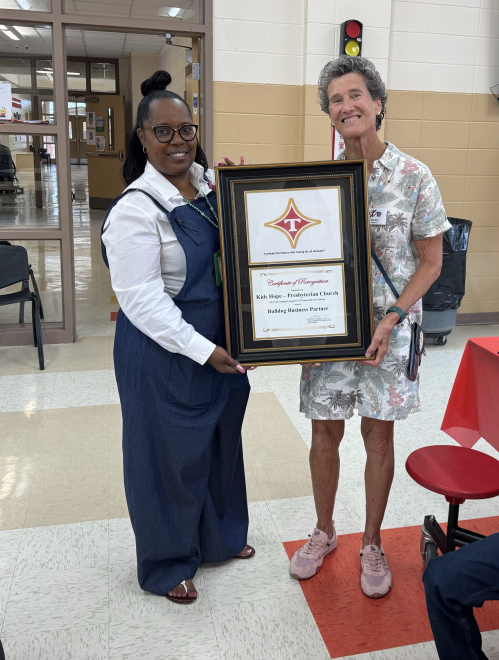Women’s ski jumpers ready to prove their Olympic mettle
Published 8:14 am Wednesday, February 5, 2014
When Jessica Jerome was granted the honor of testing the Salt Lake City ski jump before the 2002 Olympics, it was the thrill of her young lifetime, a chance to show her skills to family, friends and the European stars she idolized.
But in 2010, the same invitation was a bitter insult. Women’s ski jumping had grown, and so had Jerome, then 23 and acutely aware of the unfairness of the fact that only men could compete for Olympic medals. Women could do no better than make sure the jumps suited their liking.
“Are you serious?” Jerome recalled thinking. “No! We deserve to be here as competitors. We’re not going to be your hamsters to test out the hill for the men.”
No single word was powerful enough to convey Jerome’s joy in late December, when she became the first American female ski jumper to clinch a spot in the 2014 Sochi Games, where women’s ski jumping will make its Olympic debut on Feb. 11. She clinched the history-making slot by winning the Olympic team trials held in her Park City, Utah, backyard under circumstances unfathomable four years ago – in front of a live NBC audience, with 5,000 supporters at the finish cheering her on.
“It feels like I can’t breathe,” Jerome said at the time. Women’s ski-jumping pioneer Lindsey Van, 29, and 2013 world champion Sarah Hendrickson, 19, who has spent the last five months recovering from a catastrophic knee injury, were named later to the three-woman U.S. squad based on past international performance.
Should women’s ski jumping prove popular with the Olympics’ global TV audience, many will take bows and, no doubt, cite its inclusion for the Sochi Games as an example of the International Olympic Committee’s commitment to inclusivity and equal opportunity.
But that’s a feel-good postscript to what was a decade-long fight, waged without the support of the U.S. Ski and Snowboard Federation and despite the overt resistance of the International Ski Federation (FIS), whose president in 2005, Gian Franco Kasper, also an IOC member, said he opposed women’s ski jumping because it “seems not to be appropriate for ladies from a medical point of view.”
The peril Kasper alluded to, as other skeptics put it to Van more bluntly, is that a woman’s reproductive organs could be damaged – even dislodged – by the cumulative impact of ski-jump landings.
“I’ve had people ask me had my uterus fallen out yet,” Van said, recounting the litany of arguments marshaled against women’s ski jumping. “I heard that multiple times; it was comical. And embarrassing – not so much for me but for whoever said it.”
To win their place in the Olympics, female jumpers and their supporters had to do far more than laugh off such spurious claims and wait for old-line resistance to thaw.
Aided by a committed group of parents and a copy of “Nonprofit Kit for Dummies,” they had to raise enough money to fund their own training and travel expenses to establish their bona fides on the fledging Grand Prix series for women. And when that wasn’t sufficiently persuasive, they filed a discrimination lawsuit in a Canadian courtroom in 2008, joined by fellow competitors from four other countries, to force the IOC to include women’s ski jumping in the 2010 Vancouver Games.
As the clock on their competitive lifespan ticked down, waging the legal battle robbed young jumpers like Jerome of time they rather would have spent training. And it ended with a hollow victory: The Canadian court found in 2009 the IOC was indeed discriminating against them based on gender but stopped short of ordering officials to add women’s ski jumping to the 2010 Games.
“I was confident that the day would come; we were too much of a force to be reckoned with. But I didn’t know when,” Jerome said of the IOC’s eventual capitulation, which came in 2011. “That’s what was most unsettling about the whole process. No matter how much we tried or pushed, in the end it wasn’t up to us. There were people’s minds we couldn’t change, no matter what.”
Often called the original extreme sport, ski jumping was among the eight sports contested at the inaugural Winter Olympics in Chamonix, France, in 1924. Even then, some women were ski jumping, albeit in informal clubs.
At the Olympic level, jumpers are scored on distance and style. Jumpers push off at the start of the course, known as the in-run, then tuck into a crouch, arms at their sides as their skis hurtle down icy grooves at roughly 60 mph. With an explosive burst, they launch themselves in the air, positioning their skis in a V-shape while lifting their arms away from their body to maximize their surface area, like a human kite.
While it looks like the jumpers are soaring on TV, they don’t fly much higher than a living-room ceiling – roughly 10 to 15 feet above ground. But there’s a skill to staying aloft, reading shifting winds and making minute adjustments in body position to exploit them.
Van likens the sensation in flight to putting your hand out the window of a car at 60 mph. “Every little movement you do makes a huge difference, even with your little finger – but it’s with your whole body,” she said.
One wrong move can have calamitous results, as a generation of American baby boomers can attest from watching the horrific “agony of defeat” footage at the introduction to ABC’s “Wide World of Sports” on Saturday afternoons.
That’s the image that came to Peter Jerome’s mind when his younger daughter, then in second grade, asked whether she could enroll in an after-school ski-jumping program in Park City. The Jeromes often skied as a family on weekends. And during those outings, Jessica and her brothers would duck off through the trees and hit jumps and bumps.
“That was our favorite part,” she said. So when she came across a brochure for a class that let her go off jumps all day without having to do the downhill part, she rushed home to show her parents.
“My dad had the playback of ‘the agony of defeat’ in his brain and said, ‘No!’ ” Jerome said. “My mom looked at the brochure and said, ‘$60 for five weeks! That’s cheaper than babysitting! You’re in!’ “
Barbara Jerome, a fourth-grade teacher in Park City, said of Jessica: “She has always been a very feisty, very tenacious, kind of a take-charge kid – extremely creative, very bright and never afraid to try anything.”
At first, she alternated winter ski-jumping classes with summer soccer leagues. But when Park City upgraded its ski-jumping facilities in preparation for the 2002 Olympics, covering one hill with plastic for use in the summer, Jessica started ski jumping year round.
For girls her age, Van, nearly three years older than Jessica, was their idol – the first trailblazer they had met. Van jumped as well and as far as any of the boys.
The girls’ parents started wondering why the sport offered a path to the Olympics for boys but nothing for their daughters. They grew frustrated by the fact that the U.S. Ski and Snowboard Association, which was doing so much to develop the country’s Alpine skiers, didn’t financially support women’s ski jumping because it wasn’t an Olympic sport. Meanwhile, on the international level, as the ranks of female ski jumpers competing on the summer Grand Prix series grew, there were rumors FIS would lobby for women’s ski jumping to be added to the Olympics. But each time Peter Jerome combed the minutes of the governing body’s annual meetings, the topic never came up.
“A huge leadership vacuum existed,” said Jerome, a commercial airline pilot. “Nobody was doing anything meaningful to push the effort forward.”
So he decided to form a nonprofit organization to press the issue and support the girls’ training expenses while the lobbying campaign was going on, with “Nonprofit Kit for Dummies” as his road map.
The IOC had announced in 1991 that all future Olympic sports had to offer events for both women and men. But the rule didn’t apply retroactively, which exempted the two exclusively male Olympic sports of ski jumping and Nordic combined (a combination of ski jumping and cross-country skiing).
Women’s ski jumping finally won the support of FIS, whose members voted overwhelmingly in 2006 to recommend that it be added for 2010 in Vancouver. But the IOC’s executive committee balked, arguing that not enough countries competed internationally to warrant Olympic status.
Led by a team of Canadian lawyers who donated their time, Van, Jerome and fellow jumpers from Canada, Germany and Norway filed suit.
“I just stuck my head out there when I felt like I had nothing to lose anymore,” Van said. “Somebody had to do it. I was sick of sitting around waiting.”
The proceedings dragged on, and Jerome found herself sitting in a Vancouver courtroom as a November snow blanketed Utah, the 2010 Olympics less than a year and a half away, wishing she were home training.
Van won gold in the inaugural world championships, which were held in 2009. A German and Norwegian claimed silver and bronze, bolstering the argument that women’s ski jumping was more broad-based than the IOC believed.
But the campaign to compete in 2010 ended with the judge’s ruling.
After some soul-searching, Jerome traveled to Vancouver for the 2010 Games – not to serve as a fore jumper but to cheer her boyfriend at the time, cross-country skier Andy Newell, and several other friends who were competing.
“At first I didn’t want to go, because I felt it was a party I was not invited to,” Jerome said. “It kind of hurt my feelings. It brought me back to high school.”
Her solace came in the air.
“When you have a good jump, it’s indescribable,” Jerome said. “You can have 100 or 1,000 bad jumps over and over, and it becomes terribly frustrating. But when you have that one good jump and you know you nailed it, it completely erases every negative thought you have about everything.”
Van describes it as a feeling of control. “You’re flying, and it’s peaceful,” she said. “It’s addicting.”
U.S. athletes will account for 10 percent of the 30-athlete field for women’s ski jumping in Sochi, where Japan’s 17-year-old Sara Takanashi, who has dominated the World Cup season in Hendrickson’s absence, is the heavy gold medal favorite.
It’s the lone Olympic gold medal at stake for women, who’ll compete only on the so-called “normal hill” (K95). Male ski jumpers have three Olympic events: The normal hill, large hill (K125) and a team event, in which qualifying countries put four jumpers forward.
Looking to the 2018 Olympics, the pioneers of women’s ski jumping have their sights set high.
“We’ve got our foot in the door with getting an event in the Olympics,” Jerome said. “From here, we’re just going to keep going.”





